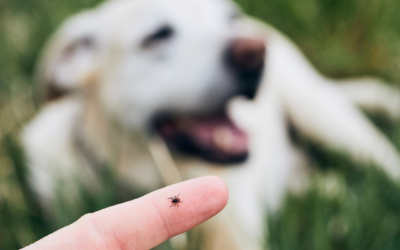What is Lyme disease?
Lyme disease is a tick-borne illness that can cause incredible discomfort for the person carrying the disease. Typically when we hear the word “disease” we begin to spiral down a rabbit hole of fear. However, Lyme disease is somewhat common as there are roughly 200,000 cases of Lyme disease each year in the U.S. Though this illness is incredibly common and not life-ending, it is still best to avoid Lyme disease at all costs. This sickness is incredibly uncomfortable and can cause a variety of itchy side effects.
The most common side effects of the disease are rashes, flu-like symptoms, and joint pain. These rashes are incredibly itchy and easily identifiable. Typically, these rashes appear red at the surface of the bite, then form a red ring around the dark center. In layman’s terms, these rashes look like a bullseye and itch like crazy. Furthermore, Lyme disease can cause flu-like symptoms such as fever, chills, and a cough. If you suspect you may have Lyme disease, you need to contact a physician immediately. Common antibiotics can heal you entirely from this disease, however, you do need to act quickly once you’ve discovered you have it.
How is Lyme disease spread?
The spread of this disease is where we pest control experts come into play. One might assume from the name that Lyme disease originates from food or drink. However, you couldn’t be more wrong. The disease is spread through tiny, minuscule critters known as ticks. Common tick species in the U.S. include black-legged ticks and western black-legged ticks. Sadly, both of these species carry Lyme disease.
The process of contracting Lyme disease is quite lengthy, and it probably begins with a rodent. Most likely, the tick that fed on you and caused you to contract this disease fed on a rodent first. As we know, ticks are parasitic creatures and attach to a warm-blooded host. While drinking this host’s blood, the tick contracts Borrelia burgdorferi, a bacteria that causes Lyme disease. After the tick got its nutrients from this host, it’ll move to a different host, maybe a human, and will then transfer this bacteria to you.
Lyme disease in Texas
The most common tick in Texas is the black-legged tick, though, here in the Lone Star state, we call them deer ticks. This species of tick received its nickname due to their preferred host of the white-tailed deer which runs rampant in Texas. In fact, approximately 5.3 million white-tailed deer inhabit the 254 counties in Texas. This high deer population happens to mean there is also an extensive tick population.
Ticks typically prefer shade or moist areas near the ground. So, if you were to have a tick infestation in your home, it’d likely be on the first floor in either your laundry room or your bathroom. As we discussed above, ticks are parasitic and need your blood to survive. Because of their nature, it will not take you long to discover you have a problem because they’ll leave their mark, an itchy rash, in their wake.
Pets can contract the disease too. These bugs could easily find other hosts around your home like your golden retriever Buddy. So, it is important to be alert to the wildlife near your home, not only for your own sake. On average, 50% of pets around America are susceptible to Lyme disease. So, ticks could not only harm your human family, but your four-legged family too!
How can I avoid Lyme disease?
The easiest way to avoid this disease is to keep ticks as far away from your property as possible. As we discussed in great detail above, Lyme disease is a tick-borne illness. This means that if you rid yourself of ticks, you rid yourself of the risk of Lyme disease. Now, you may be wondering how to prevent ticks from getting into your home, and the answer is simple. Spray the perimeter of your property with a flea and tick preventative spray or have a physical perimeter of foliage around your property. The sprayable preventative measure might seem like the better option. However, sometimes those sprays are not safe for our four-legged friends. If you do have a pet, having a tall grass perimeter around your lawn should work just as well!
What do you do if ticks have already infested your home? Removing ticks from your home might seem more difficult than initially preventing them. However, this task is entirely doable. You can purchase a flea and tick preventative spray for the inside of your home and see how that handles the problem. If you are concerned about the toxins in the sprays, you could make your own. You can make your own spray by combining oil, water, vinegar, and witch hazel. These sprays do work, however sometimes, depending on the population of ticks in your home, you might need extra help. This is where we come in!
What now?
Now that we have discussed exactly what Lyme disease is and what it looks like in Texas, we need to discuss what’s right for you! We can say without a doubt that living with or near ticks is not right for you, your family, or your pets. If you are experiencing a hostile tick takeover, schedule a free inspection with 855Bugs pest control in Waco and Temple Texas today! We want to help you live Lyme disease-free!




